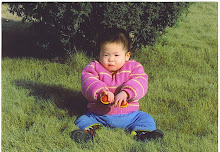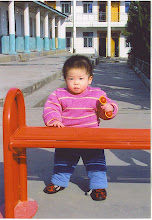Five years ago China would have been very low on the list of foreign countries that we were ever likely to visit. We knew that there is great natural beauty in the country, also amazing culture and history, but it just never entered our thoughts that we might go there someday. We had made some wonderful friends in Hawaii of Chinese descent, but China remained a mysterious place, that we rarely thought of apart from news reports and commentary in the media. We imagined that if we ever traveled outside the U.S. it would be to Europe or some island in the Pacific. Actually, there is so much we haven’t seen in the states that I doubt we would ever have traveled internationally at all.
Since our decision to adopt a daughter from China everything has changed. We watch CCTV out of China on a daily basis. Suddenly it’s like there’s another world opened to us that we want to learn about and understand. Knowing that we have a daughter over there makes it personal. She is over there somewhere. Her biological parents are there, if they are still living. Where do they live and work? What is life like for them? Is our little girl in an orphanage or foster home? Is she warm and well fed, or cold and hungry?
We seek out movies about China, and documentaries that reveal what life is like over there. We have studied some of the history of China. A movie that really touched my heart recently is entitled, “Mardi Gras Made in China”. The movie was shown on the Sundance channel on our satellite system. We recorded it on the DVR, and have watched it several times. The movie traces the origins of the plastic beads that Mardi Gras revelers try to amass that are thrown from the floats in the parades. The movie is not suitable for children due to uncensored footage of some of the Mardi Gras debauchery.
What is exceptional about the movie is the revelation of where the beads come from and who makes them. They are made in China by young workers, mostly female, many of whom have moved into the factory cities to help their families survive. They are often from poor rural villages, and the factory jobs provide much more income than could be earned in the village. The factory supervisors prefer female laborers because they are more compliant. The young girls, mostly in their teens live on the grounds of the factory in dorms. A bunk is shared by two girls on alternating twelve hour shifts. The girls are paid based on production quotas and if they are fast enough can earn up to four dollars a day. If they make mistakes, their pay is reduced accordingly.
One of the young girls in the movie explains that she has to work in the bead factory to support her family. They are too poor to send her to school, but hopefully her brother can go to school. She says that she puts all of her hope of the future in her brother. She says that she is willing to sacrifice for him. She gets a two week vacation (unpaid of course) for Chinese New Year. When she returns to visit her family she takes gifts for her family including a watch for her brother. The selfless sacrifice of the young Chinese girl stands in stark contrast to the tawdry excesses of Bourbon Street.
Each day, I catch myself looking at the labels of clothing, hardware, and products of every sort. Not a day goes by that I fail to see “Made in China” several times. I turn it over in my hands and I wonder about the person that made it. As many things that we use and wear are made in China, there is the possibility that what I am holding might have been made by our little girl’s mama. I promise myself to not forget to pray for that Chinese mother, and to do the best that I can in raising her little girl, the best gift that we will ever receive that was “made in China”.
Ronnie
Saturday, January 6, 2007
Subscribe to:
Post Comments (Atom)










No comments:
Post a Comment